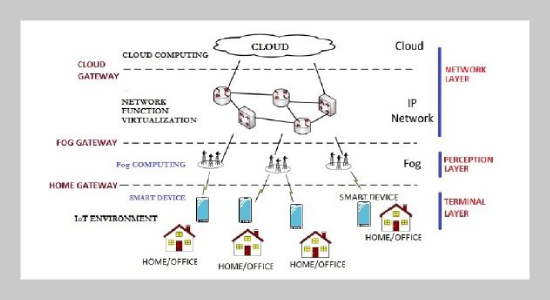A.K. Damodaram 1, L. Venkateswara Reddy2, M. Giri3, and N. Manikandan1
1Department of Mechanical Engineering, Sree Vidyanikethan Engineering College (Autonomous), Tirupati, Andhra Pradesh, India
2Department of Computer Science & Engineering, KG Reddy College of Engineering & Technology, Hyderabad, Telangana, India
3Department of Computer Science & Engineering, Joginpally B.R. Engineering College, Hyderabad, Telangana, India
Received:
March 16, 2022
Accepted:
October 3, 2022
Publication Date:
November 22, 2022
Copyright The Author(s). This is an open access article distributed under the terms of the Creative Commons Attribution License (CC BY 4.0), which permits unrestricted use, distribution, and reproduction in any medium, provided the original author and source are cited.
Download Citation: ||https://doi.org/10.6180/jase.202308_26(8).0015
ABSTRACT
The multilayer IoT-Cloud architecture offers a distinctive system for deployment of a ‘drone assisted’ real-time data gaining and monitoring using IOT energy meters in the smart cities. Despite of the advantages of flexibility, cost-effectiveness, functionality, and availability of the Cloud-Fog architecture comprising present day LPWAN technologies for sensor devices, there is a need for study of various competing LPWAN algorithms that will support cloud-fog-IoT computing environment. The present article is some studies on present-day technologies for IoT-Cloud Smart city adoptability. A pilot run is simulated using MATLAB SIMULINK to obtain the drone movement and the smart meter readings were obtained using the same. The article studies and compares compatibility of present-day LPAWAN technologies NB-IoT, LoRa, and SigFox for the multi-layer IoT-Cloud architecture for drone assisted smart meter monitoring in smart city environment.
Keywords:
IoT-Cloud Architecture; LPWAN Technologies; Drones; Smart meters; Smart Cities
REFERENCES
- [1] B. Hamdaoui, M. Alkalbani, T. Znati, and A. Rayes, (2019) “Unleashing the power of participatory IoT with blockchains for increased safety and situation awareness of smart cities" IEEE Network 34(2): 202–209.
- [2] S. L. Keoh, S. S. Kumar, and H. Tschofenig, (2014) “Securing the internet of things: A standardization perspective" IEEE Internet of things Journal 1(3): 265–275.
- [3] S. Lee, D. Yoon, and A. Ghosh. “Intelligent parking lot application using wireless sensor networks”. In: 2008 International Symposium on Collaborative Technologies and Systems. IEEE. 2008, 48–57.
- [4] H. Rajab and T. Cinkelr. “IoT based smart cities”. In: 2018 international symposium on networks, computers and communications (ISNCC). IEEE. 2018, 1–4.
- [5] M. Talebkhah, A. Sali, M. Marjani, M. Gordan, S. J. Hashim, and F. Z. Rokhani, (2021) “IoT and big data applications in smart cities: recent advances, challenges, and critical issues" IEEE Access 9: 55465–55484.
- [6] M. Fahmideh and D. Zowghi. “IoT smart city architectures: An analytical evaluation”. In: 2018 IEEE 9th Annual Information Technology, Electronics and Mobile Communication Conference (IEMCON). IEEE. 2018, 709–715.
- [7] Y. Mehmood, F. Ahmad, I. Yaqoob, A. Adnane, M. Imran, and S. Guizani, (2017) “Internet-of-things-based smart cities: Recent advances and challenges" IEEE Communications Magazine 55(9): 16–24.
- [8] C. Huang and S. Nazir, (2021) “Analyzing and evaluating smart cities for IoT based on use cases using the analytic network process" Mobile Information Systems 2021:
- [9] M. J. Kaur and P. Maheshwari. “Building smart cities applications using IoT and cloud-based architectures”. In: 2016 International Conference on Industrial Informatics and Computer Systems (CIICS). IEEE. 2016, 1–5.
- [10] O. Alvear, C. T. Calafate, J.-C. Cano, and P. Manzoni, (2018) “Crowdsensing in smart cities: Overview, platforms, and environment sensing issues" Sensors 18(2):460.
- [11] X. Masip-Bruin, E. Marın-Tordera, G. Tashakor, A. Jukan, and G.-J. Ren, (2016) “Foggy clouds and cloudy fogs: a real need for coordinated management of fog-tocloud computing systems" IEEE Wireless Communications 23(5): 120–128.
- [12] J. Jiang and G. Han, (2018) “Routing protocols for unmanned aerial vehicles" IEEE Communications Magazine 56(1): 58–63.
- [13] P. Bellavista, G. Cardone, A. Corradi, and L. Foschini, (2013) “Convergence of MANET and WSN in IoT urban scenarios" IEEE Sensors Journal 13(10): 3558–3567.
- [14] K. Szum, (2021) “IoT-based smart cities: A bibliometric analysis and literature review" Engineering Management in Production and Services 13(2): 115–136.
- [15] Y. Liu, X. Jia, D. Pi, et al., (2016) “Research on the Application of the Segmentation Based on Key Points in the Power Consumption of Wireless Sensor" Journal of Applied Science and Engineering 19(1): 109–112.
- [16] P.Wang, H. Luo, X. Li, Z. Zhao, et al., (2016) “A new habit pattern learning scheme in smart home" Journal of Applied Science and Engineering 19(1): 83–94.
- [17] R. Dhanalakshmi, L. Kavisankar, S. Balasubramani, et al., (2021) “A Novel Technique using IoT Based Automated Irrigation System for Smart Farming" Journal of Applied Science and Engineering 25(4): 641–648.
- [18] C. Sathish, K. Srinivasan, et al., (2021) “An artificial bee colony algorithm for efficient optimized data aggregation to agricultural IoT devices application" Journal of Applied Science and Engineering 24(6): 927–935.
















